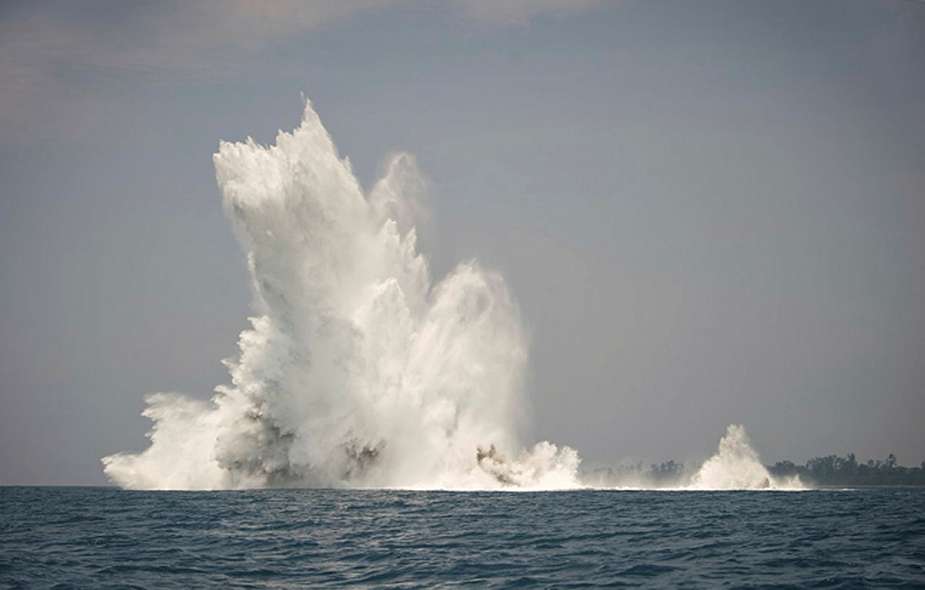According to a PR published by Rheinmetall on August 29, 2023, the Commonwealth of Australia has awarded RWM Italia S.p.A., an Italian subsidiary of Rheinmetall AG, a multimillion-euro contract.
Follow Navy Recognition on Google News at this link
 Mine explosion. (Picture source: Rheinmetall)
Mine explosion. (Picture source: Rheinmetall)
The deal involves the delivery of a substantial quantity of cutting-edge smart sea mines, placing Rheinmetall's order value in the low three-digit million-euro bracket, with anticipated expansions in subsequent years.
Highlighting the confidence the Australian government places in Rheinmetall's innovative defense solutions, this acquisition of the latest generation of smart sea mines can be seen as a strategic initiative to further strengthen Australia's naval prowess.
These advanced mines, capable of deployment from various platforms, were opted for after a thorough market evaluation by the Australian Defence Forces last year, which eventually culminated in the selection of RWM Italia for this mission-critical capability.
The Australian government's evaluation recognized RWM Italia's unparalleled technical prowess in meeting the strategic goals of the Australian Defence Forces (ADF) and their capacity to deliver the required volume of sea mines. Although the exact types and quantities of the sea mines remain classified, the commencement of deliveries is set for later this year.
The acquisition of RWM Italia's smart mines, known for their rapid deployability and advanced technology, signifies Australia's commitment to fortifying its maritime territories, thereby presenting a formidable deterrent to potential adversaries. Additionally, the Australian industry is set to play a pivotal role in the system's sustained maintenance and operations.
Naval mine
Naval mines are explosive devices placed in water to target ships or submarines. Unlike depth charges, mines wait passively until triggered by a vessel's proximity or contact.
They can be used offensively to disrupt enemy movements or defensively to safeguard friendly zones. Their presence forces adversaries to choose between time-consuming minesweeping, risking mine-related damages, or navigating areas with concentrated enemy forces.



